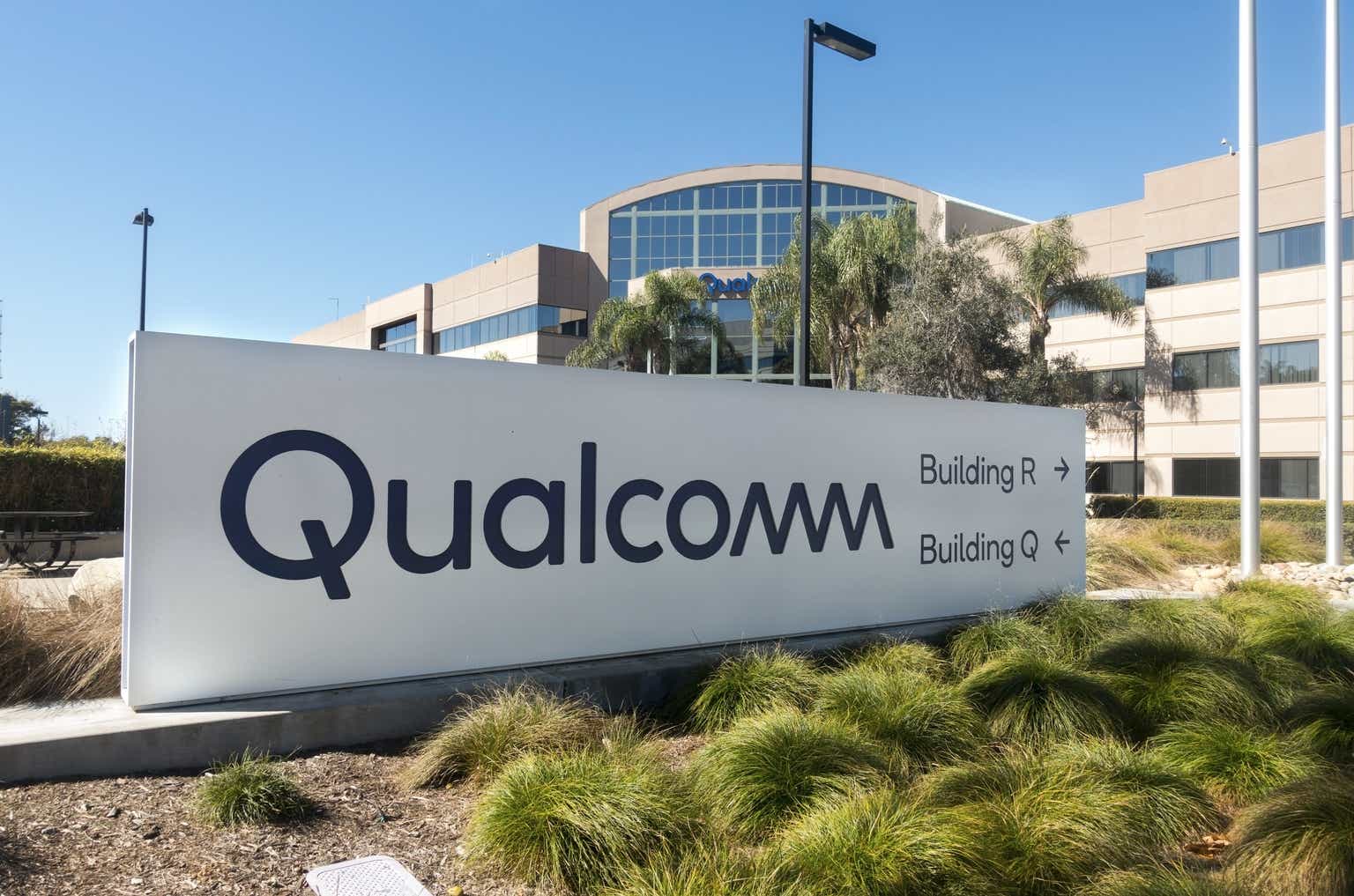Market Review
U.S. equities advanced in the third quarter of 2024. Intraquarter, ongoing debates around the potential economic effects of monetary policy created considerable volatility. With investors worried about slightly higher unemployment and slowing wage growth, stocks broadly sold off through much of July and into early August. For the remainder of the quarter, the market rebounded as inflation measures improved, the economy continued to show resilience and the Federal Reserve signaled its intention to pivot toward easing, later confirming the move with a 0.5% decrease in the federal funds rate. The 10-year Treasury began the quarter yielding just above 4.3% and ended it at 3.8%, underscoring the easing of financial conditions. Within the S&P 500 Index, the Utilities, Real Estate and Industrials sectors performed the best, while the Energy, Information Technology and Communication Services sectors were the weakest performers.
|
Fund Facts |
Investor Shares |
Institutional Shares |
|
Ticker |
MUTF:PRBLX |
MUTF:PRILX |
|
Net Expense Ratio 1 |
0.82% |
0.61% |
|
Gross Expense Ratio |
0.82% |
0.62% |
|
Inception Date |
08/31/1992 |
04/28/2006 |
|
Benchmark |
S&P 500 Index |
|
|
Asset Class |
U.S. large cap core |
|
|
Objective |
Capital appreciation and current income |
|
|
Performance |
Annualized Returns (%) |
||||
|
As of 09/30/2024 |
3 Mos. |
1 Yr. |
3 Yr. |
5 Yr. |
10 Yr. |
|
PRBLX – Investor Shares |
5.50 |
32.11 |
10.00 |
14.57 |
12.67 |
|
PRILX – Institutional Shares |
5.56 |
32.38 |
10.22 |
14.81 |
12.91 |
|
S&P 500 Index |
5.89 |
36.35 |
11.91 |
15.98 |
13.38 |
|
Performance data quoted represent past performance and are no guarantee of future returns. Current performance may be lower or higher than the performance data quoted, and current performance information to the most recent month end is available on the Parnassus website (www.parnassus.com). Investment return and principal value will fluctuate, so an investor’s shares, when redeemed, may be worth more or less than their original principal cost. Returns shown in the table do not reflect the deduction of taxes a shareholder may pay on fund distributions or redemption of shares. The S&P 500 Index is an unmanaged index of common stocks, and it is not possible to invest directly in an index. Index figures do not take any expenses, fees or taxes into account, but mutual fund returns do. The estimated impact of individual stocks on the Fund’s performance is provided by FactSet. |
|||||
Performance Review
Materials and Financials led third-quarter relative contributors
The Fund (Investor Shares) returned 5.50%, (net of fees), slightly underperforming the S&P 500 Index’s 5.89%. Stock selection in the Materials and Financials sectors boosted relative performance. Conversely, stock selection in the Information Technology and Industrials sectors detracted.
Year to date, the Fund returned 18.20% (net of fees), trailing the S&P 500 Index’s 22.08%. An underweight in the Consumer Discretionary sector boosted relative performance, while stock selection in the Information Technology sector hindered relative results.
Top Contributors
|
Security |
Avg. Weight (%) |
Total Return (%) |
Allocation Effect (%) |
|
Realty Income (O) |
3.81 |
21.73 |
0.53 |
|
Amazon (AMZN) |
1.59 |
8.26 |
0.51 |
|
Sherwin-Williams (SHW) |
1.96 |
28.15 |
0.35 |
|
ICE |
3.26 |
17.68 |
0.32 |
|
D.R. Horton (DHI) |
1.38 |
35.59 |
0.31 |
|
Return calculations are gross of fees, time weighted and geometrically linked. Returns would be lower as a result of the deduction of fees. |
Realty Income is poised to benefit from lower interest rates. Because its commercial tenants are mostly on 10-year leases, the stock’s steady dividend stream is attractive in the current environment of slow deceleration in the economy with rates coming down. In this favorable backdrop, the company also continues to execute well.
Amazon ended the quarter slightly down, so our underweight position contributed to relative return. We added the stock after the share price declined significantly, and the timing of the purchase proved beneficial: after we initiated the position, shares rebounded strongly as sentiment around the consumer improved.
Sherwin-Williams gained on optimism that lower interest rates would spur a resurgence in home renovations, leading to higher sales of its paint products. The company also hosted an investor day where it gave medium-term financial targets that were well received by investors.
Intercontinental Exchange, the parent company of the New York Stock Exchange and other financial exchanges, was helped by the heightened market volatility, which supports higher trading volume.
D.R. Horton, a leading homebuilder, saw its shares rise amid confidence that a lower-rate environment would lead to more affordable housing prices and a corresponding increase in home buying. Further, investors were impressed by the company’s execution and management’s intention to deploy cash to a stock buyback.
Bottom Contributors
|
Security |
Avg. Weight (%) |
Total Return (%) |
Allocation Effect (%) |
|
Applied Materials (AMAT) |
2.15 |
-14.21 |
-0.46 |
|
Intel (INTC) |
0.80 |
-34.67 |
-0.46 |
|
Alphabet (GOOG,GOOGL) |
5.51 |
-8.83 |
-0.31 |
|
Waste Management (WM) |
2.83 |
-2.34 |
-0.23 |
|
Micron Technology (MU) |
0.65 |
-32.59 |
-0.22 |
|
Return calculations are gross of fees, time weighted and geometrically linked. Returns would be lower as a result of the deduction of fees. |
Applied Materials, the world’s largest supplier of wafer fabrication equipment for semiconductors, saw its shares pressured by negative sentiment around a potentially broad- based trend of capital expenditure cuts in memory spending.
Intel shares declined as the company announced a major cost-cutting plan and reported disappointing financial results. We exited our position in the stock.
Alphabet, the parent company of Google, remained the subject of regulatory proceedings for alleged anticompetitive practices relating to its search business, worrying investors about the long-term implications for the company. Also weighing on the stock were concerns over Google’s ability to capture younger consumers’ mindshare relative to generative AI competitors.
Waste Management announced second-quarter revenue and earnings that fell just short of analyst expectations, weighing on the stock. However, company management reiterated their optimistic full-year guidance for adjusted operating EBITDA (earnings before interest, taxes, depreciation and amortization) and free cash flow.
Micron Technology underperformed due to worries over the durability of growth in the semiconductor industry, which depressed investor sentiment. We exited the position during the quarter.
Portfolio Positioning
Opportunistic adjustments to maintain quality standards
The portfolio’s largest overweights are in Materials and Financials, while its largest underweights are in Health Care and Energy (no exposure).
In Financials, we significantly reduced our position in derivatives marketplace CME Group (CME), a holding we view as defensive, based on our changed view of the company’s fundamentals. The risk/reward proposition has grown less attractive in light of an emerging competitor in the space. We used the proceeds to fund a new position in Stryker (SYK), a surgical equipment and implants manufacturer in the Health Care sector that is also a defensive stock with a low correlation to the broader economy.
In Communication Services, we exited our position in cable provider Charter Communications (CHTR), using the proceeds from that sale for the Stryker addition as well.
In keeping with an overall portfolio emphasis on increasing quality, we made several adjustments in the Information Technology sector. We sold two semiconductor stocks—Intel and Micron Technology, both lower-quality businesses— while reducing our position in Apple (AAPL), given that a rally had made its valuation less attractive. We used the proceeds to fund a new, substantial position in higher-quality Amazon. Although the online retail giant had been struggling early in the quarter, the stock rebounded strongly after our purchase.
Also in the Information Technology sector, we exited a position in Adobe (ADBE) and initiated a new one in Synopsys (SNPS). Synopsys’s stock has sold off from its high, has an equal if not better growth profile and is a much better business in terms of competitive dynamics and growth runway.
Outlook
Current environment remains favorable for stocks
We have maintained our balanced approach to portfolio positioning. As we briefly saw in the third quarter, volatility can return quickly given elevated market and economic expectations. A hallmark of our strategy and all the Parnassus strategies is downside protection, and our approach proved beneficial during the quarter’s temporary downturn.
Despite the continued stock market rally, the environment is still favorable for risk assets, given that we have seen incremental easing of monetary policy while inflation continues to moderate and consumer health remains resilient. We remain optimistic about the possibilities created by the shift away from legacy computing infrastructure to AI infrastructure, including accelerated and cloud computing, semiconductors, software and other companies benefiting from these capabilities. That’s why we have a portfolio theme around companies with hyperscale exposure. We are monitoring for overinvestment and excessive valuations, adjusting our positions accordingly.
We will stay invested as long as valuations are reasonable and the investment trends are sustainable, reducing exposure only if valuations become too high. We perform detailed analysis to help us ignore the short-term market noise and focus on the durability of these investments.
We remain focused on executing our investment process and maintaining exposure to increasingly relevant, competitively advantaged businesses at attractive valuations. We continue to see attractive opportunities across the Materials and Financials sectors while opportunistically taking advantage of volatility in Information Technology.
Portfolio Activity
|
Activity |
Security Name |
Ticker |
Sector |
Rationale |
|
Sold |
Intel Corp. |
INTC |
Information Technology |
Intel is experiencing a decline in market share, rising competition, uncertainty regarding CPU demand and an unclear future for its foundry business. Meanwhile, the stock lacks strong cash flow or earnings support as we await recovery. We reduced and eventually exited the position. |
|
Sold |
Micron Technology Inc. |
MU |
Information Technology |
Due to market compression and uncertainty around memory cyclicality, we sold Micron to scale our position in Amazon, where we see more attractive risk/reward opportunity. |
|
Sold |
Adobe Inc. |
ADBE |
Information Technology |
Adobe is contending with market cyclicality, rising competition and lofty AI monetization expectations that are unlikely to be met in the near term. We sold Adobe for Synopsys, which faces fewer competitive threats and has room to grow as companies adopt Synopsys software for custom semiconductor design. |
|
Activity |
Security Name |
Ticker |
Sector |
Rationale |
|
Sold |
Charter Communications Inc. |
CHTR |
Information Technology |
Charter Communications is facing stronger-than-anticipated competition from mobile network operators due to their increased M&A activities and plans to accelerate fixed wireless access (FWA) deployment. We recalibrated our risk/reward estimates and decided to exit the position for better opportunities elsewhere. |
|
Bought |
Styker Corp. |
SYK |
Health Care |
We view Stryker as a best-in-class medical technology provider. It is a leader in most of its end markets and has a broad product offering, which has helped it achieve significant revenue and market share growth compared to its competitors. Stryker is particularly dominant in orthopedics, and we are optimistic about upcoming product launches, including the expansion of its Mako robotic assisted surgery arm. The company also has one of the top industry CEOs with a strong track record of leading successful innovations and mergers and acquisitions to help the company grow. |
|
Bought |
Amazon.com Inc. |
AMZN |
Consumer Discretionary |
Amazon’s hyperscale AWS business has the potential to accelerate revenue growth, while its retail business appears on track to improve margins in the coming years. We also think Amazon can be resilient in various economic scenarios. A stock correction following the second- quarter results presented an opportunity to purchase the hyperscaler with improving fundamentals at a favorable valuation. |
|
Bought |
Synopsys Inc. |
SNPS |
Information Technology |
Synopsys plays a crucial role in optimizing semiconductor processing power beyond physical design limits. It benefits from companies like Google and Amazon designing their own chips and the proliferation of AI accelerator development. Its proprietary EDA technology and rising demand for custom chips and AI accelerators should drive durable revenue and earnings growth. |
|
Sector Weights |
As of 09/30/24 |
|
|
Sector |
% of TNA |
S&P 500 |
|
Information Technology |
29.9 |
31.7 |
|
Communication Services |
6.2 |
8.9 |
|
Industrials |
9.3 |
8.4 |
|
Health Care |
7.9 |
11.6 |
|
Financials |
17.2 |
12.9 |
|
Consumer Staples |
6.0 |
5.9 |
|
Materials |
7.9 |
2.3 |
|
Real Estate |
3.9 |
2.3 |
|
Consumer Discretionary |
10.7 |
10.2 |
|
Energy |
N/A |
3.3 |
|
Utilities |
N/A |
2.5 |
|
Cash and Other |
0.9 |
N/A |
|
Ten Largest Holdings |
As of 09/30/24 |
|
Security |
% of TNA |
|
Microsoft Corp. (MSFT) |
6.6 |
|
Nvidia Corp. (NVDA) |
6.5 |
|
Amazon.com Inc. |
5.3 |
|
Alphabet Inc., Class A |
4.5 |
|
Realty Income Corp. |
3.9 |
|
Salesforce Inc. (CRM) |
3.9 |
|
Deere & Co. (DE) |
3.6 |
|
Mastercard Inc. Class A (A) |
3.3 |
|
Intercontinental Exchange Inc. |
3.3 |
|
Ball Corp. (BALL) |
3.0 |
|
Portfolio holdings are subject to change. |
|
Glossary Earnings Growth is the change in a company’s reported net income over a period of time. Free Cash Flow (‘FCF’) represents the cash a company can generate after accounting for capital expenditures needed to maintain or maximize its asset base. Important Information PIL-617968-2024-10-08 The Standard & Poor’s 500 Composite Stock Price Index (the S&P 500 Index) is a widely recognized index of common stock prices. It is an unmanaged index of 500 common stocks primarily traded on the New York Stock Exchange, weighted by market capitalization. Index performance includes the reinvestment of dividends and capital gains. An individual cannot invest directly in an index. An index reflects no deductions for fees, expenses or taxes. The S&P 500 Index is a product of S&P Dow Jones Indices LLC and/or its affiliates and has been licensed for use by Parnassus Investments. Copyright © 2022 by S&P Dow Jones Indices LLC, a subsidiary of McGraw-Hill Financial, Inc., and/or its affiliates. All rights reserved. Redistribution, reproduction and/or photocopying in whole or in part are prohibited without written permission of S&P Dow Jones Indices LLC. For more information on any of S&P Dow Jones Indices LLC’s indices please visit www.spdji.com. S&P® is a registered trademark of Standard & Poor’s Financial Services LLC and Dow Jones® is a registered trademark of Dow Jones Trademark Holdings LLC. Neither S&P Dow Jones Indices LLC, Dow Jones Trademark Holdings LLC, their affiliates nor their third party licensors make any representation or warranty, express or implied, as to the ability of any index to accurately represent the asset class or market sector that it purports to represent and neither S&P Dow Jones Indices LLC, Dow Jones Trademark Holdings LLC, their affiliates nor their third party licensors shall have any liability for any errors, omissions or interruptions of any index or the data included therein. 1. As described in the Fund’s current prospectus dated May 1, 2024, Parnassus Investments has contractually agreed to reduce its investment advisory fee to the extent necessary to limit total operating expenses to 0.82% of net assets for the Parnassus Core Equity Fund (Investor Shares) and to 0.61% of net assets for the Parnassus Core Equity Fund (Institutional Shares). This agreement will not be terminated prior to May 1, 2025, and may be continued indefinitely by the investment adviser on a year-to-year basis. The net expense ratio is what investors pay. ENVIRONMENTAL, SOCIAL AND GOVERNANCE (ESG) GUIDELINES: The Fund evaluates ESG factors as part of the investment decision-making process, considering a range of impacts they may have on future revenues, expenses, assets, liabilities and overall risk. The Fund also utilizes active ownership to encourage more sustainable business policies and practices and greater ESG transparency. Active ownership strategies include proxy voting, dialogue with company management and sponsorship of shareholder resolutions, and public policy advocacy. There is no guarantee that the ESG strategy will be successful. Mutual fund investing involves risk, and loss of principal is possible. The Fund’s share price may change daily based on the value of its security holdings. Stock markets can be volatile, and stock values fluctuate in response to the asset levels of individual companies and in response to general U.S. and international market and economic conditions. In addition to large cap companies, the Fund may invest in small and/or mid cap companies, which can be more volatile than large cap firms. Security holdings in the fund can vary significantly from broad market indexes. ©2024 Parnassus Investments, LLC. All rights reserved. PARNASSUS, PARNASSUS INVESTMENTS and PARNASSUS FUNDS are federally registered trademarks of Parnassus Investments, LLC. The Parnassus Funds are distributed by Parnassus Funds Distributor, LLC. Before investing, an investor should carefully consider the investment objectives, risks, charges and expenses of a fund and should carefully read the prospectus or summary prospectus, which contain this and other information. The prospectus or summary prospectus can be found on the website, www.parnassus.com, or by calling (800) 999-3505. |
Original Post
Editor’s Note: The summary bullets for this article were chosen by Seeking Alpha editors.
Read the full article here















